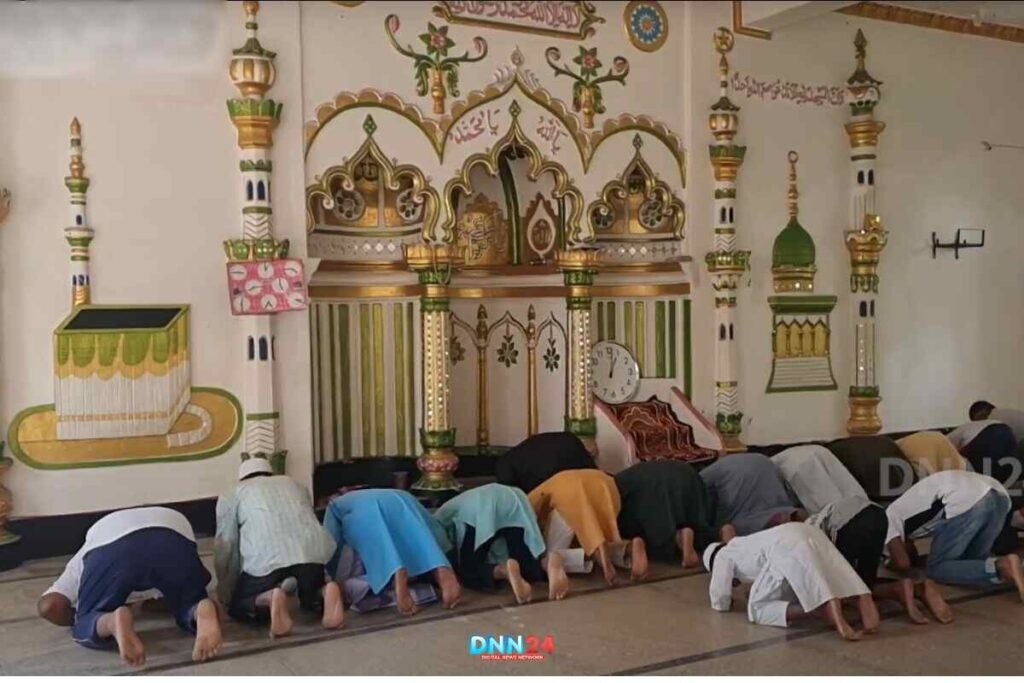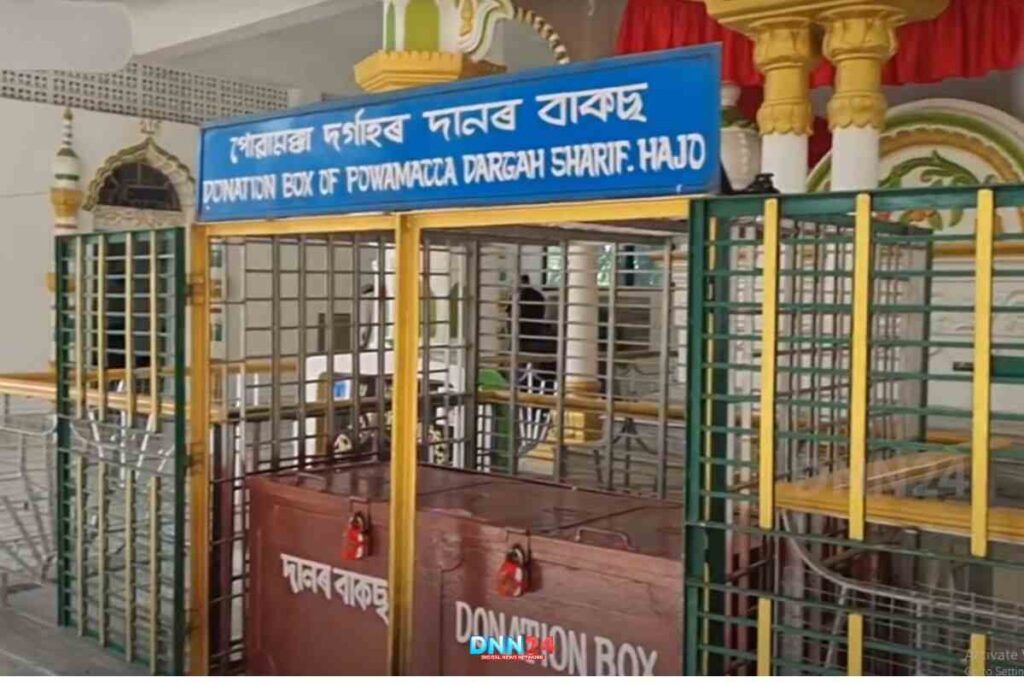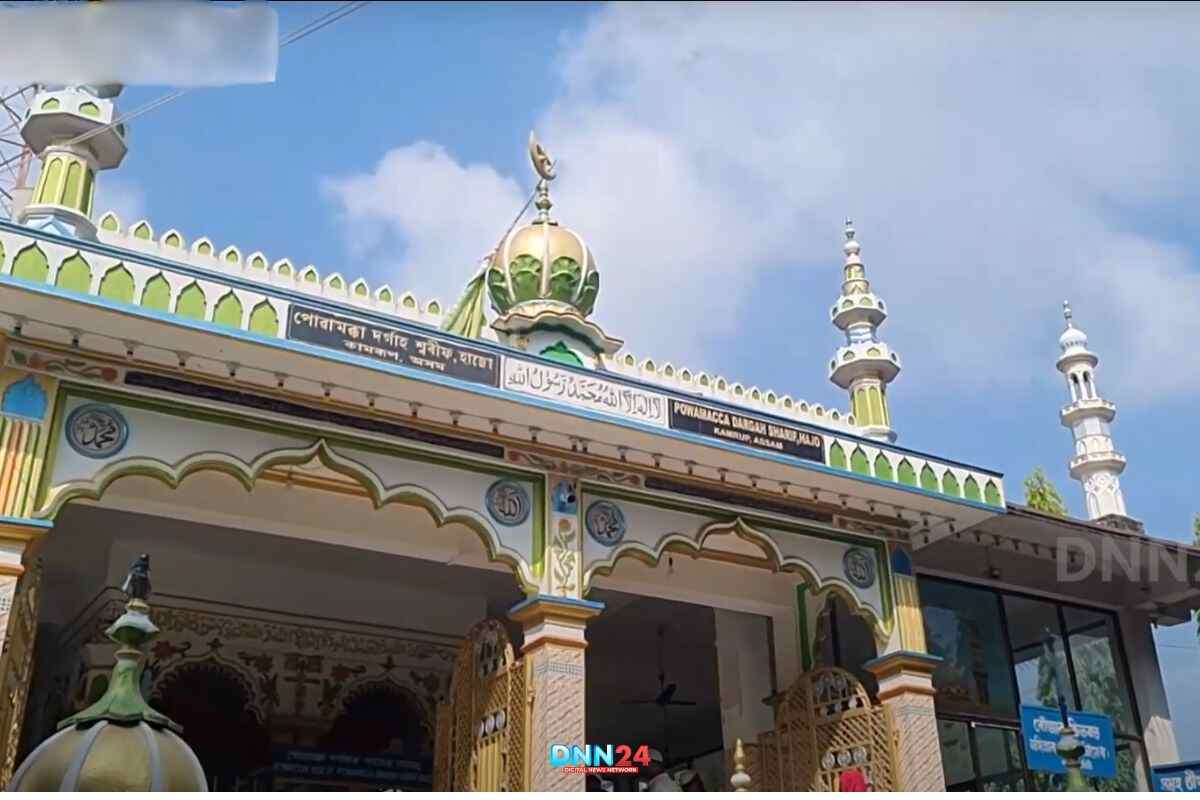In the serene village of Hajo in Assam, beneath a shared roof, lies a unique sanctuary that transcends religious boundaries – the Powa Mecca. This sacred abode houses a mosque and the revered mausoleum of Hazrat Shah Gyasuddin Auliya, drawing devotees from Hindu, Muslim, Sikh, Christian, and Buddhist faiths. Intriguingly, it is a testament to unity, where diverse worshippers converge, leaving with fulfilled prayers and hearts brimming with contentment.
The Mausoleum and Mosque of Hazrat Shah Gyasuddin Auliya
As one steps into the mosque, their gaze is inevitably drawn to the mausoleum of Hazrat Shah Gyasuddin Auliya, nestled on the right side, accompanied by a prayer room for the devout. The mosque’s walls are adorned with Arabic inscriptions, depicting verses alongside images of the Kaaba and Baitul Muqaddas. The roots of this sacred site trace back to a time when Islam was a developing presence in this region.

Approximately a thousand years ago, a group of 70 saints from Baghdad, Iraq, ventured into the heart of India, establishing a haven for Islamic propagation atop the Hajo hills. Shah Gyasuddin Auliya, the leader of this group, played a pivotal role in constructing the mosque for prayer and worship. Legends unfold how these saints never returned to their homeland, choosing this hill to breathe their last. Shah Gyasuddin Auliya, too, found his eternal abode here.
The Enigma Behind “Powa Mecca”
The terminology “Powa Mecca” beckons curiosity with varying local interpretations. Some contend that Shah Gyasuddin carried a handful of soil from Mecca – a symbolic fourth part of the holy land – when he left his homeland. His fervent wish was to be buried under the mosque’s roof, with this soil placed upon his grave. His disciples fulfilled this wish posthumously, giving rise to the appellation “Powa Mecca” or “Quarter of Mecca.”

Contrary accounts suggest that the term stems from the local Assamese dialect, where “pua” translates to “received” or “achieved.” According to this narrative, the site earned its name due to fulfilling desires and prayers – a place where aspirations were “achieved.”
Shah Gyasuddin Auliya’s Timeless Influence
Legend has it that the aura of saints persists eternally. Though centuries have elapsed since the passing of Shah Gyasuddin Auliya, his spiritual presence endures within the sacred precincts of Powa Mecca. Ahom kings, including Rudra Sinha, revered Powa Mecca, elevating it as a sacred pilgrimage destination for both Hindus and Muslims.

In 1726, Ahom King Rudra Sinha visited, elevating Powa Mecca to a revered pilgrimage destination for people of all faiths. Daily, many devotees, carrying their hopes and empty purses, flock to the mausoleum, becoming a source of sustenance for families residing within the shrine’s vicinity.
Withstanding the Test of Time
Powa Mecca has witnessed destruction and reconstruction despite enduring multiple earthquakes over the centuries. Shah Jahan initiated the first restoration in 1632, followed by Aurangzeb in 1657. The 1857 earthquake mandated a crucial renovation, with Ahom kings pivotal in reviving this historic landmark, ensuring its restoration.
Powa Mecca stands resilient, a testament to cultural amalgamation and mutual respect, encapsulating rich history amid diverse religious communities. Even renowned travellers like Ibn Battuta and Gautam Buddha are said to have graced this hallowed ground.
Conclusion
In the heart of Assam, Powa Mecca beckons seekers of diverse faiths, offering solace and a sense of unity. Its timeless saga narrates tales of fulfilment, embodying the spirit of coexistence. As pilgrims step onto its sacred grounds, prayers and diverse cultures converge, transforming Powa Mecca into a celestial haven of unity.
You can connect with DNN24 on Facebook, Twitter, and Instagram and subscribe to our YouTube channel.

